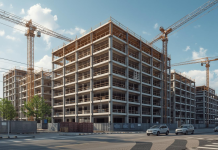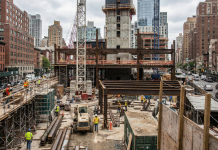I started investigating Milwaukee’s harbor cleanup after hearing about an unusual bid result. Michels Corporation won a $115.4 million contract to build a dredged material management facility. Their bid came in $35 million under the estimated $150 million budget.
The Real Challenge Behind the Numbers
Milwaukee’s three rivers carry decades of industrial contamination into Lake Michigan. The Milwaukee, Menomonee, and Kinnickinnic rivers have deposited 1.9 million cubic yards of contaminated sediment in the harbor.
That’s enough contaminated material to fill 13 football fields 50 feet deep.
Traditional approaches truck this sediment to distant landfills. Michels proposed something different.
The Innovation Hidden in Plain Sight
The company designed a containment facility directly in the harbor. Instead of trucking contaminated sediment across Wisconsin, they’re using vacuum-type dredging and hydraulic pumping to move material through pipes.
This approach saves approximately 1 million gallons of diesel fuel compared to trucking methods.
The facility becomes permanent infrastructure for future Great Lakes dredging needs.
What This Reveals About Market Position
Michels ranks 34th on the 2024 Engineering News-Record Top 400 Contractors List. They’re also 8th among Power Contractors and 8th among Contractors Working Abroad.
Environmental infrastructure requires technical expertise, regulatory knowledge, and innovative thinking.
The Broader Pattern
Milwaukee’s project follows the successful Randle Reef model in Hamilton Harbour, Ontario. That facility handled the largest contaminated site on the Canadian side of the Great Lakes.
Environmental infrastructure is becoming a major market segment.
Lessons for Construction Leadership
Three insights from Michels’ approach:
Innovation reduces costs. Their vacuum dredging method cut $35 million from project expenses while improving environmental outcomes.
Specialization creates value. Environmental infrastructure requires specific knowledge that commands premium pricing.
Long-term thinking wins. Building permanent facilities that serve future needs creates ongoing revenue opportunities.
The Milwaukee harbor project shows how construction companies can transform environmental challenges into business advantages.








